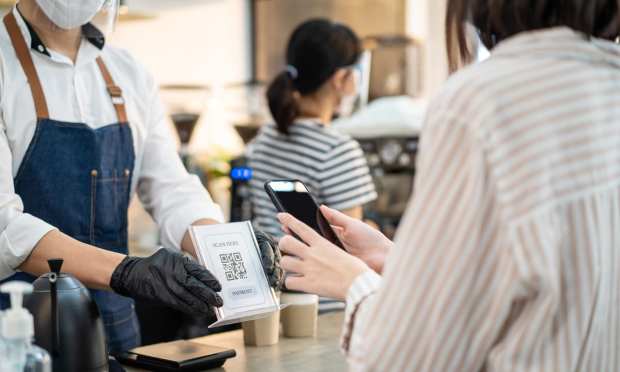Citcon Sees Trillion Dollar Opportunity For QR-Friendly Merchant POS Systems

As much as consumers are out and about and heading back into stores, Citcon President and COO Wei Jiang told PYMNTS, they’re not the people and customers today as they were in early 2020.
After a full year of shopping remotely and having goods delivered to their doors, the post-COVID consumer is looking to pull that digitally elevated experience back into physical stores and face-to-face commerce in the form of more advanced contactless payment options.
Unfortunately, many real-world merchants’ legacy point of sale (POS) systems aren’t able to offer those options — which, Jiang noted, amounts to a huge loss of opportunity and money.
“[Merchants] often aren’t set up to accept touchless payments easily,” he explained. “That’s the reason we started to invest in helping merchants allow their legacy POS systems to accept a new set of payments. It’s hard to put an exact figure to this, but we are talking about trillions of dollars in lost payment opportunities.”
The push to solve that problem, and to enable more merchant POS systems to accept contactless, QR-based payments, is behind Citcon’s recent announcement that it has been granted Oracle Validated Integration with Xstore Expertise for its integration of the Citcon payment gateway solution.
Opening Up With Oracle
As Jiang explained, the integration offers Oracle Xstore merchants a quick, cost-efficient way to easily accept contactless mobile wallet payments — including PayPal, Venmo, WeChat Pay and Alipay — on their existing POS systems.
And that capability can be gained through a fairly simple upgrade of Oracle software that merchants are already using, he noted — a much easier situation than what they would face now if they wanted to update their POS to accept contactless QR payments.
“In the past, for Oracle merchants to accept touchless QR payments, it required some customized integration, and sometimes a system integrator. That can be expensive and can take a long time,” Jiang said.
Time is something that physical merchants don’t really have at present, he noted, as their priority is getting their stores reopened and active. They need mobile payments now because the inability to meet the surging demand is costing them money.
But speed still has to be done safely, said Jiang. The power of the recent integration is that it can provide for both key needs — it’s accessible through a simple software upgrade and it’s trustworthy for the merchants because it’s already been validated and verified by Oracle through what Jiang described as an extremely rigorous process.
The Mobile Future
The need to offer mobile is only going to rise from here. Jiang pointed out that cards are an important part of commerce and aren’t going anywhere anytime soon, but we’ve seen the mounting power of mobile payments all over the world — and for far longer than the last 18 or so months of the pandemic period. QR code-based mobile wallets are known to be dominant in China, have made tremendous strides in all of Asia and have seen an incredible growth spurt in laggard regions like South America of late. Even in the U.S., where interest had been tepid until fairly recently, there has been a veritable explosion in QR codes, with big-name backing in the form of players like PayPal and Venmo.
And more and more younger consumers are drifting toward mobile and contactless options, as merchants are increasingly aware that accepting those payment methods can motivate shoppers to return to their stores.
“We’re seeing that touchless QR code-based mobile wallet payments are starting to redefine the shopping experience,” Jiang said. “We’re still at a very early stage in the U.S. with mobile wallet adoption, but from what we see, it’s happening here much sooner than a lot of people expected.”
